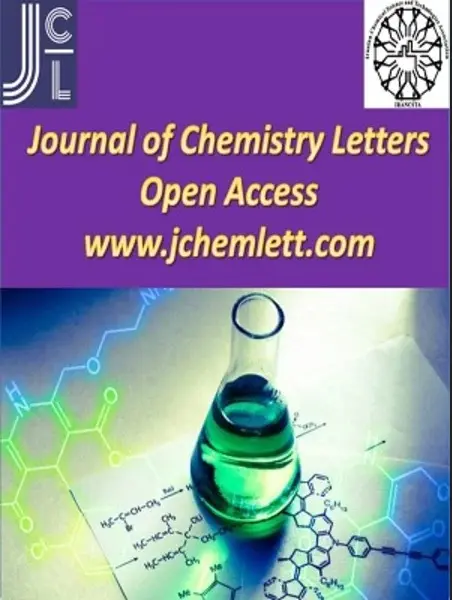-
in-silico modeling of inhibitory activity and toxicity of some indole derivatives towards designing highly potent dengue virus serotype 2 ns4b inhibitors
جزئیات بیشتر مقاله- تاریخ ارائه: 1401/02/12
- تاریخ انتشار در تی پی بین: 1401/10/28
- تعداد بازدید: 211
- تعداد پرسش و پاسخ ها: 0
- شماره تماس ژورنال: 989360221112
in-silico modeling of inhibitory activity and toxicity of some indole derivatives towards designing highly potent dengue virus serotype 2 ns4b inhibitors
the global prevalence of dengue virus (denv) infection has become a source of great concern to humanity. as such, infection, if left untreated, could progress to a life-threatening stage called dengue hemorrhagic fever or dengue shock syndrome. a large percentage of the world's population could be at risk of being infected by the dengue virus. the denv ns4b receptor is essential in viral replication and hence could in principle be suitable as a therapeutic target in the treatment of dengue viral infection.
the augmentation of existing agents that could inhibit the dengue virus is important. in this research, various classes of molecular descriptors were generated. quantitative structure-activity relationship studies (qsars) have been conducted to correlate the molecular properties of some indole derivatives with their anti-dengue activity and toxicity. the inhibitory activity and toxicity prediction models were statistically valid and robust, with acceptable statistical validation factors such as predicted r2 pred., adjusted r2 adj., cross-validated q2 and r2 regression coefficient, etc.
(r2 pred. = 0.64448, r2 adj. = 0.59223, cr 2 𝑝= 0.57134, q2 cv = 0.64448, r2 = 0.63201) and (r2 pred. = 0.81813, r2 adj. = 0.56015, cr 2 𝑝= 0.5386, q2cv = 0.50548, r2 = 0.60645), respectively. the models revealed that the average broto-moreau autocorrelation-lag 7/weighted by first ionization potential (aats7i), number of hydrogen bond acceptors (nhbacc) for activity and 3d topological distance-based autocorrelation-lag 9/weighted by van der waals volumes (tdb9v) descriptors were found to strongly influence the anti-dengue biological activity (pec50) and toxicity (pcc50) of the indole derivatives, respectively. the indole derivatives were predicted to be orally bioavailable with excellent gastrointestinal absorption (94.044–90.219%). the denv-2 ns4b inhibitory activity, as well as the cytotoxicity of indole derivatives with no experimental data, could be predicted with high precision using the models developed, which could further lead to a cut in experimental cost as well as the design of highly potent and less toxic derivatives.
حوزه های تحت پوشش ژورنال
مقالات جدیدترین رویدادها
-
استفاده از تحلیل اهمیت-عملکرد در ارائه الگوی مدیریت خلاقیت سازمانی و ارائه راهکار جهت بهبود
-
بررسی تاثیر ارزش وجوه نقد مازاد بر ساختار سرمایه شرکت های پذیرفته شده در بورس اوراق بهادار تهران
-
بررسی تأثیر سطح افشای ریسک بر قرارداد بدهی شرکت های پذیرفته شده در بورس اوراق بهادار تهران
-
بررسی تأثیر رتبه بندی اعتباری مبتنی بر مدل امتیاز بازار نوظهور بر نقد شوندگی سهام با تأکید بر خصوصی سازی شرکت ها
-
تأثیر آمیخته بازاریابی پوشاک ایرانی بر تصویر ذهنی مشتری پوشاک ایرانی (هاکوپیان)
-
بررسی تاثیر ارزش متعارف هر سهم بر بازده و کارایی شرکت های پذیرفته شده در بورس اوراق بهادار تهران بازده استفاده ازمدل های (eps) ،(ros) ،(ri) ،(roi)
-
تاثیر سیاستهای مختلف فرمونگذاری الگوریتم کلونی مورچه در حل مساله طراحی شبکه
-
ارزیابی روند رشد مقاومت فشاری بتن در دماهای مختلف بر اساس نوع سیمان مصرفی
-
نتایج جراحی داکریوسیستورینوستومی آندوسکوپیک مکانیکی در انسداد اولیه مجرای نارولاکریمال
-
اثر و عوارض جانبی هیدروکسی اوره در بیماران تالاسمی اینتر مدیا
مقالات جدیدترین ژورنال ها
-
مدیریت و بررسی افسردگی دانش آموزان دختر مقطع متوسطه دوم در دروان کرونا در شهرستان دزفول
-
مدیریت و بررسی خرد سیاسی در اندیشه ی فردوسی در ادب ایران
-
واکاوی و مدیریت توصیفی قلمدان(جاکلیدی)ضریح در موزه آستان قدس رضوی
-
بررسی تاثیر خلاقیت، دانش و انگیزه کارکنان بر پیشنهادات نوآورانه کارکنان ( مورد مطالعه: هتل های 3 و 4 ستاره استان کرمان)
-
بررسی تاثیر کیفیت سیستم های اطلاعاتی بر تصمیم گیری موفق در شرکتهای تولیدی استان اصفهان (مورد مطالعه: مدیران شرکتهای تولیدی استان اصفهان)
-
بررسی نقش معلم در چگونگی ایجاد صفات مثبت پایدار در دانش آموزان پایه پنجم استان کرمانشاه
-
بررسی رابطه درآمیزی تحصیلی با بهزیستی سازمانی دانشجویان دانشگاه فرهنگیان استان لرستان
-
مدل سازی چالش های پیش ایندی حضور کارکنان سازمان های دولتی در بازار سرمایه
-
مقایسه اعتیاد به اینترنت در نوجوانان دختر و پسر و ارتباط آن با تیپ های شخصیتی و افسردگی
-
investigating the relationship between the conflict resolution skills among couples on the level of marital conflict and their mental health (case study: centers of psychological and counseling services of qaemshahr city)


سوال خود را در مورد این مقاله مطرح نمایید :